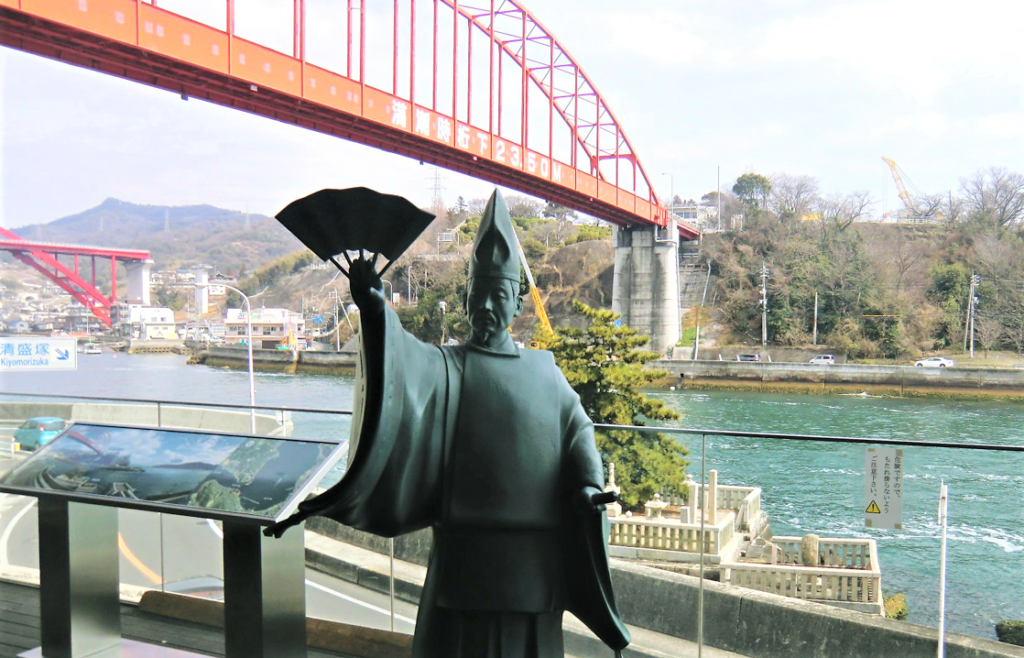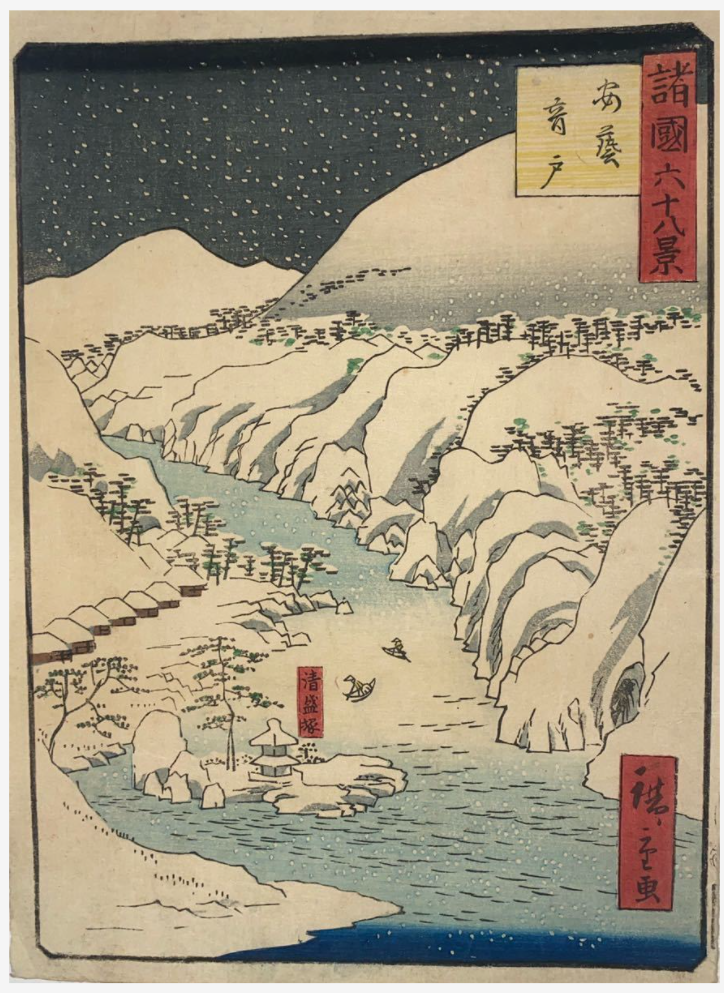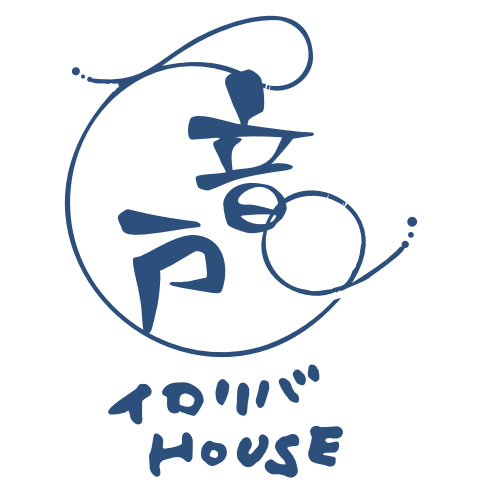History
Heian Period (794–1185)
Legend says that Taira no Kiyomori (1118–1181) whipped up trade with the Song dynasty (China of the time) and excavated Ondo in 1165 to create a shorter route through the Seto Inland Sea, resulting in the Ondo no Seto Straight. It also made the route to Itsukushima Shrine more convenient.
Taira no Kiyomori defeated the Fujiwara clan who held the aristocracy and established Japan’s first samurai-dominated government. He was able to suppress the pirates who had been running rampant at the time and established safe marine traffic. He worshipped at Itsukushima Shrine to pray for safety at sea and made many offerings to it.

Muromachi Period (1336–1573)
Ashikaga Yoshimitsu (1358–1408), the 3rd shogun of the Ashikaga shogunate, is famous for having built the Kinkaku-ji (Temple of the Golden Pavilion) in Kyoto. Records show that he passed through the Ondo no Seto Straight with a large fleet of 100 boats on the way to worship at Itsukushima Shrine and faced difficulties with the flow of the tide.
Sengoku Period (late 15th–late 16th century)
The island was fought over by the Noma and Kobayakawa clans, but when the Noma clan fell, it became the latter’s domain under the Mori clan, a daimyo feudal lord who ruled the entire Chugoku region.
Edo Period (1603–1868)
The Ondo no Seto Straight ferry service began in the late Edo period. With sardine fishing also flourishing, Ondo developed as a port town. The sake brewery Ebisuya built an annex called Goshoro in Ondo, which became widely known for its wonderful views. Ondo was also depicted in an ukiyo-e woodblock print as one of Hiroshige II’s “Sixty-Eight Views of Provinces.”

Meiji Period Onwards (1868–)
With the construction of a naval base on the mainland side of the straight, Kure’s city center saw significant development and grew to be the tenth most populous city in Japan, surpassing even Hiroshima City. As an adjacent area, Ondo’s neighborhoods bustled as well.
Ondo is tied to the development of the Seto Inland Sea route!
One reason Ondo thrived during the Edo period (1603-1868) is because of the Seto Inland Sea route. Small Japanese-style boats originally used to send annual tributes of rice to Osaka from each region crossed the Seto Inland Sea, carrying cargo along the way. As the scale increased, so did the size of the ships. Kitamaebune and higaki kaisen ships carrying daily goods from Osaka would load up on salt and oil from the Seto Inland Sea, buying and selling along the way. They would sail around the Sea of Japan side as they did business in Niigata Prefecture and even so far as Hokkaido. Ondo was very much one key point along those marine transport routes.
